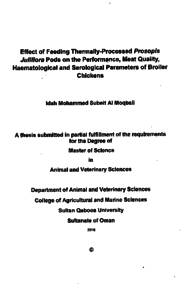وثيقة
Development of drilling facility for evaluation of the effect of vibration on buckled drill string
الناشر
Sultan Qaboos University
ميلادي
2014
اللغة
الأنجليزية
الملخص الإنجليزي
In hydrocarbon drilling operations, when an axial load is applied beyond a critical value, the drill string will buckle, forming a sinusoidal wave and with increasing the axial load the drill string ultimately goes into a helical configuration. The higher number of contacts between the drill string and the wellbore is, the more friction introduced. Increasing the drill string friction, due to increasing the area of contact with the wellbore, eventually leads to lock-up length beyond which the drilling cannot proceed further.
An in-house experimental setup is developed to imitate the wellbore being drilled with the presence of vibrating facility that has the capability to vibrate the drill string axially, as vibration is understood to be a well-known technique to reduce friction between contacting bodies in many engineering systems. The setup is employed to examine the effects of amplitude and frequency of vibration on the friction force between the drill string and the wellbore and on the axial load transfer or the weight on bit (WOB) of the drill string. Response surface methodology is used to produce a prediction model to determine the effects of various amplitudes and frequencies on the WOB of the drill string. Results of the experimentation study have shown that increase of amplitude and frequency of vibration have positive effects on reducing friction force and increasing WOB. The WOB has increased from 55% up to 94% which indicates how strong this technique is in improving force transfer through the buckled drill string. The optimal value of WOB has found when the top load is (680 N), the frequency almost equal (4.5 Hz) and amplitude is (20 mm).
الوصف
Thesis
المجموعة
URL المصدر
الملخص العربي
في عمليات الحفر لإستخراج المواد الهيدروكربونية و عند استعمال قوة ضغط محورية على عمود الحفر تتجاوز الحدود الطبيعية لاحتماله؛ فإن عمود الحفر سيلتوي بشكل موجي و مع استمرار زيادة هذه القوة فإن شكل الالتواء قد يتغير من الشكل الموجي إلى الشكل اللولبي، هذه الالتوائات تتسبب في تلامس عمود الحفر مع جدار الحفرة مكونة قوة احتكاك بحيث مع زيادة عدد نقاط التلامس تزيد قوة الاحتكاك المتولدة بين السطحين، هذه الزيادة المطردة في قوة الاحتكاك تؤدي لوصول عمود الحفر لحالة الانغلاق بحيث لا يمكن مواصلة عملية الحفر بعدها، وقد تم التوصل إلى فهم آن تولید ذبذبات بين السطوح المتلامسة يساعد في التقليل من قوة الاحتكاك المتولدة بينها و يتم تطبيق هذه الفكرة في انظمة هندسية كثيرة او تم تطوير اعدادات تجربة لتحاكي وضع الحفرة في عمليات الحفر مع وجود ادوات انتاج ذبذبات قادرة على توليد اهتزازات محورية في عمود الحفر التجريبي، اعدادات التجربة هذه تعمل على اختبار تأثير التردد و الطول الموجي للذبذبات المنتجة على قوة الحتكاك بين عمود الحفر و جدار الحفرة و على نقل القوة المحورية (او ما يعرف بالوزن على رأس الحفار) من خلال عمود الحفر، حيث ان اعدادات التجربة تتكون من انبوب يحاكي وضع الحفرة و على مصدر لقوة الضغط المحوري و على مصدر لانتاج الذبذبات.
تم استخدام منهجية استجابة السطح لانتاج نموذج تنبؤي عن تأثير تغير نطاق التردد و الطول الموجي للذبذبات المنتجة على عمل عمود الحفر في نقل القوة المحورية إلى رأس الحفار، و قد بينت نتائج الدراسة أن زيادة قيمة كل من التردد و الطول الموجي للذيذبات له تأثير ايجابي على عمل عمود الحفر في نقل القوة المحورية إلى رأس الحفار
تم استخدام منهجية استجابة السطح لانتاج نموذج تنبؤي عن تأثير تغير نطاق التردد و الطول الموجي للذبذبات المنتجة على عمل عمود الحفر في نقل القوة المحورية إلى رأس الحفار، و قد بينت نتائج الدراسة أن زيادة قيمة كل من التردد و الطول الموجي للذيذبات له تأثير ايجابي على عمل عمود الحفر في نقل القوة المحورية إلى رأس الحفار
قالب العنصر
الرسائل والأطروحات الجامعية

